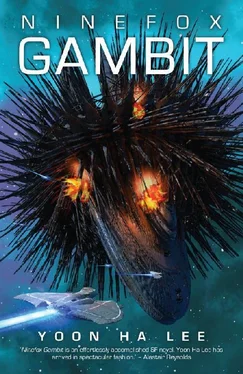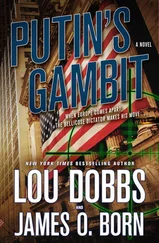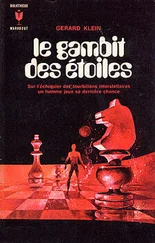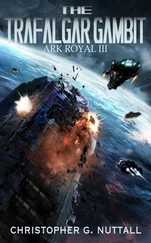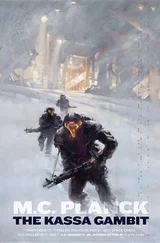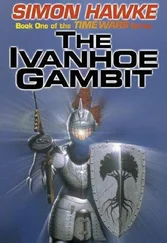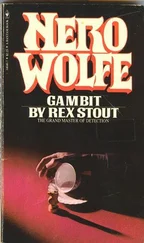Cheris considered the positions of the game’s towers and the single remaining cannon. She had a good memory, but not an eidetic one, and since she had been on leave, she hadn’t stored the memory in her allotment on the company’s grid. This could have been a recreation of that match – she had been losing at this point, and it was difficult to recover from the loss of a cannon – but if there was some small divergence, some subtle message, she couldn’t unriddle it.
It was a pity the Shuos couldn’t tell her straight out what they wanted of her, but the Shuos were incapable of passing up a chance to use a game as a pedagogical weapon. (Admittedly, this could be fun in bed, as Alaia had been happy to demonstrate.)
She picked up the gamecloth again, inspecting both sides and wondering what she had missed. There it was: worked into the back of an empty square was a flexible filament in the shape of a gear.
The servitor tilted its head at her encouragingly. Cheris hesitated, then pulled the filament out. She felt a painful pulse of heat in her forearm. There had to be a message in the filament. Her gloves felt briefly warm, then cold.
A map distended in her mind. She could feel it as though she could walk her fingers over the tangled strands of voidmoth routes and feel the heat of far-scattered stars. The map identified the Fortress of Scattered Needles for her, unnecessarily. It was the largest nexus fortress in the Entangled March, and formed a microcosm of the hexarchate.
One of the Fortress’s functions was to project calendrical stability throughout the region. If it had fallen to calendrical rot, the hexarchate’s exotic weapons would be of limited use there. The hexarchate lagged in invariant technology, which could be used under any calendrical regime. In particular, too close to the rot the voidmoths’ primary stardrives would fail. Without the voidmoths to connect the hexarchate’s worlds, the realm would unravel.
If the heretics converted the Fortress to their own calendrical system, the problem became critical. The hexarchate would have to contend with a rival power at the heart of its richest systems.
Given the gravity of the situation, Cheris was surprised that Kel Command hadn’t dispatched a general to deal with the matter already. Perhaps they didn’t want to risk a general’s contamination.
Cheris was given threadbare information on the other six who desired the honor of putting down this particular rebellion. Not their names; she suspected she would not be permitted to see their faces, either, nor they hers. She was surprised that there was any question of choice for something this critical. Shouldn’t they have picked someone before setting it to a game? But the decision was not hers, and she reminded herself of the notorious Shuos fondness for games, the Shuos eye staring at her out of the composite.
All the Kel except Cheris were high officers, although there were no generals. Maybe they were disgraced the way she was. Not unsurprisingly, all of them had experience in space warfare, except for Four and Cheris.
One was a lieutenant colonel with what she assumed was a distinguished record. It was hard to tell with all the locations scrubbed out, but there were five medals in there, including the Red Pyre, which was awarded for what the Kel called “suicidal bravery even for us.”
Two, the Rahal, was a Doctrine officer. The idea of giving a Rahal direct control over a mission worried Cheris. The Rahal were the high faction who led the hexarchate: they set Doctrine and maintained the high calendar. They weren’t known for flexibility, although this one’s involvement suggested a certain minimal willingness to deal with Kel foibles.
Three was another lieutenant colonel, but nothing in their record – nothing she could see, anyway – made them stand out one way or the other.
Four was an infantry colonel with a staggering collection of decorations. Cheris bet this one would be hard to beat. It figured: lucky unlucky four, the number of death and the favored number of the Kel.
Five worried her the most: a Shuos agent. The Shuos were typically closemouthed about records. If they already had one of their own involved, what were they trying to do by rescuing a Kel from outprocessing? She owed no loyalty to the Shuos beyond what she owed to the hexarchate entire. Did they know her well enough to expect her to fulfill some role without being prompted? But she knew the answer to that.
Six was the third lieutenant colonel, who looked entirely conventional and who had participated in three sieges. Cheris reminded herself that she might be overmatched, but they were probably in the bidding for the same reason that she was, which meant they weren’t any better at staying out of trouble with Doctrine.
“I don’t suppose,” Cheris said to the servitor, “you know what resources I am allowed to include in my proposal?” It was tempting, but stereotypically Kel, to suggest dropping all available bombs on the Fortress and seeing if they knocked out the shields. Not that Kel stereotypes ever stopped a Kel.
The servitor surprised her by speaking, albeit in flashes of light in the Kel drum code. “Any plan you can induce Kel Command to accept is permitted,” it said: not quite a tautology.
“Is there further intelligence on the Entangled March?”
The servitor was silent. Need-to-know, probably.
It had been worth a try. “Has the meeting been scheduled yet?” Cheris asked.
“Approximately three hours,” the servitor said.
“ Approximately ?” Cheris said incredulously.
The servitor shrugged.
“All right,” she said. “Is there anything else?”
Another shrug.
Cheris rolled up the gamecloth and chained it shut again, but when she turned to offer it to the servitor, it had gone and the door was closing behind it.
Approximately three hours, which would still be earlier than she would rather have risen. She should have been researching instead of sleeping, but she had been tired and she had needed the rest.
Since there was no point in going back to bed, she put the gamecloth on a corner of the desk and frowned at the wall. Any plan you can induce Kel Command to accept is permitted. She had to assume that the others had been told the same thing. It was one thing to know that the might of the Kel was theoretically available to you. It was another thing to devise a plan that had a chance of being accepted. The Kel had six cindermoths, their most powerful warmoths, which could also project calendrical stability. She might propose that they all be sent to the Fortress, and then they’d have a chance, but that would leave the rest of the hexarchate undefended, and no one would take her seriously. Her future depended on being taken seriously. Even if her future meant nothing to her, which wasn’t the case anyway, she was obliged to offer the best plan she could for the hexarchate’s sake.
Cheris looked down at her hands and forced them to relax. Kel Command would be looking for the fastest, most economical solution. This meant the use of weapons ordinarily forbidden.
And that meant the Kel Arsenal. Catastrophe guns, abrogation sieves, small shining boxes that held the deaths of worlds. During graduation from Kel Academy Prime, she had seen such a box, disarmed, dented, and ordinary in appearance. The speaker said it had annihilated the populations of three planets. Small planets, but still. It was remarkable how much death could be held in a small box.
Cheris didn’t have the Arsenal’s inventory and knew better than to ask for it. How many small shining boxes could she request? But the hexarchs didn’t seek a scouring, or they would have done it already. They meant to preserve the Fortress of Scattered Needles under their rule.
Читать дальше
